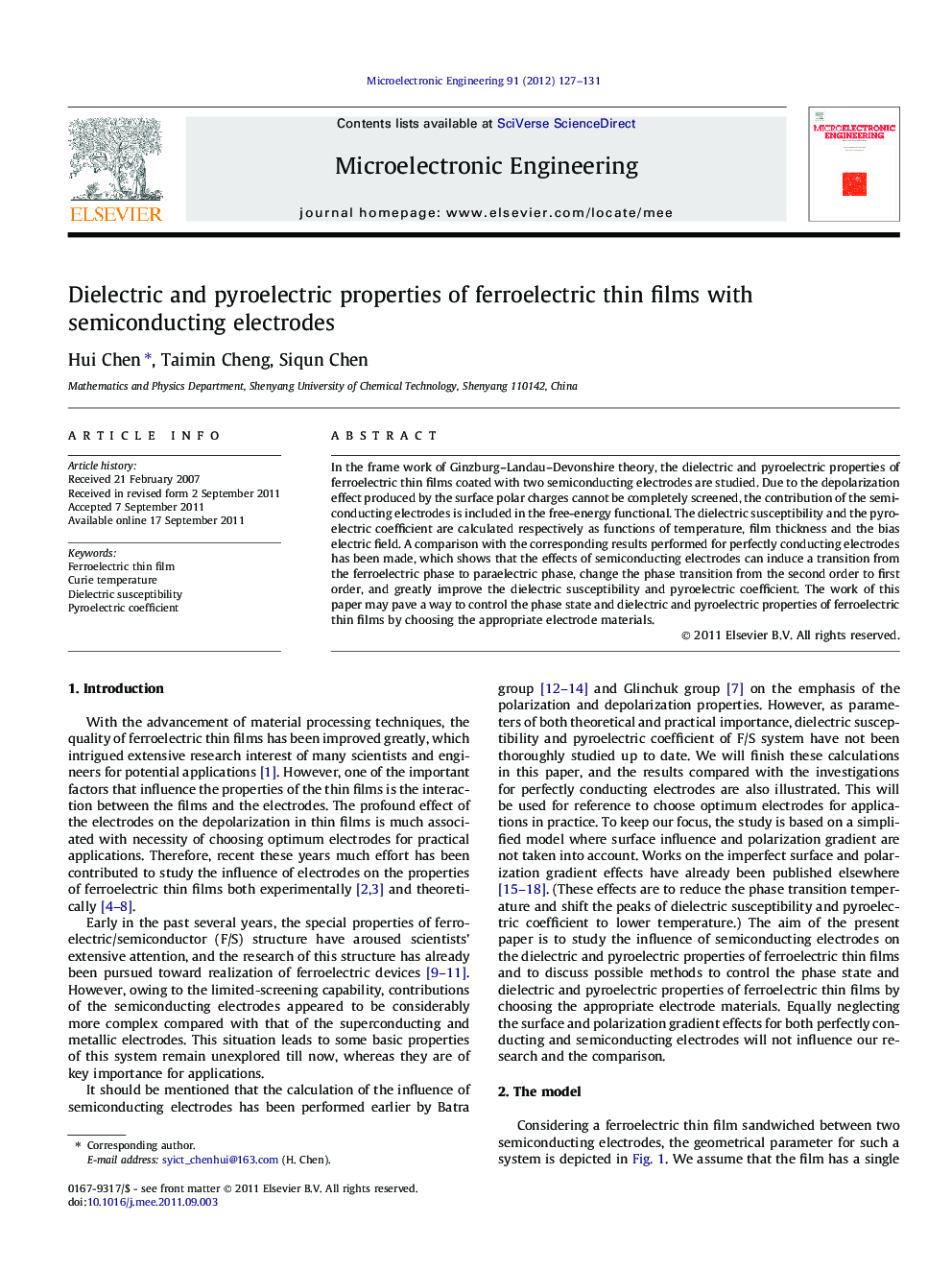| Article ID | Journal | Published Year | Pages | File Type |
|---|---|---|---|---|
| 540326 | Microelectronic Engineering | 2012 | 5 Pages |
In the frame work of Ginzburg–Landau–Devonshire theory, the dielectric and pyroelectric properties of ferroelectric thin films coated with two semiconducting electrodes are studied. Due to the depolarization effect produced by the surface polar charges cannot be completely screened, the contribution of the semiconducting electrodes is included in the free-energy functional. The dielectric susceptibility and the pyroelectric coefficient are calculated respectively as functions of temperature, film thickness and the bias electric field. A comparison with the corresponding results performed for perfectly conducting electrodes has been made, which shows that the effects of semiconducting electrodes can induce a transition from the ferroelectric phase to paraelectric phase, change the phase transition from the second order to first order, and greatly improve the dielectric susceptibility and pyroelectric coefficient. The work of this paper may pave a way to control the phase state and dielectric and pyroelectric properties of ferroelectric thin films by choosing the appropriate electrode materials.
Graphical abstractPolarization as a function of temperature for several different film thickness values is shown in this figure. The dotted line is for films with perfectly conducting electrodes (PCE), and solid lines are for films with semiconducting electrodes (SE). The ferroelectric film is of second order, with the decrease of film thickness, the phase transition for SE curves turns to show first order characteristics. It demonstrates that the effects of semiconducting electrodes can induce a transition from the ferroelectric phase to paraelectric phase, change the phase transition from the second order to first order.Figure optionsDownload full-size imageDownload as PowerPoint slide
